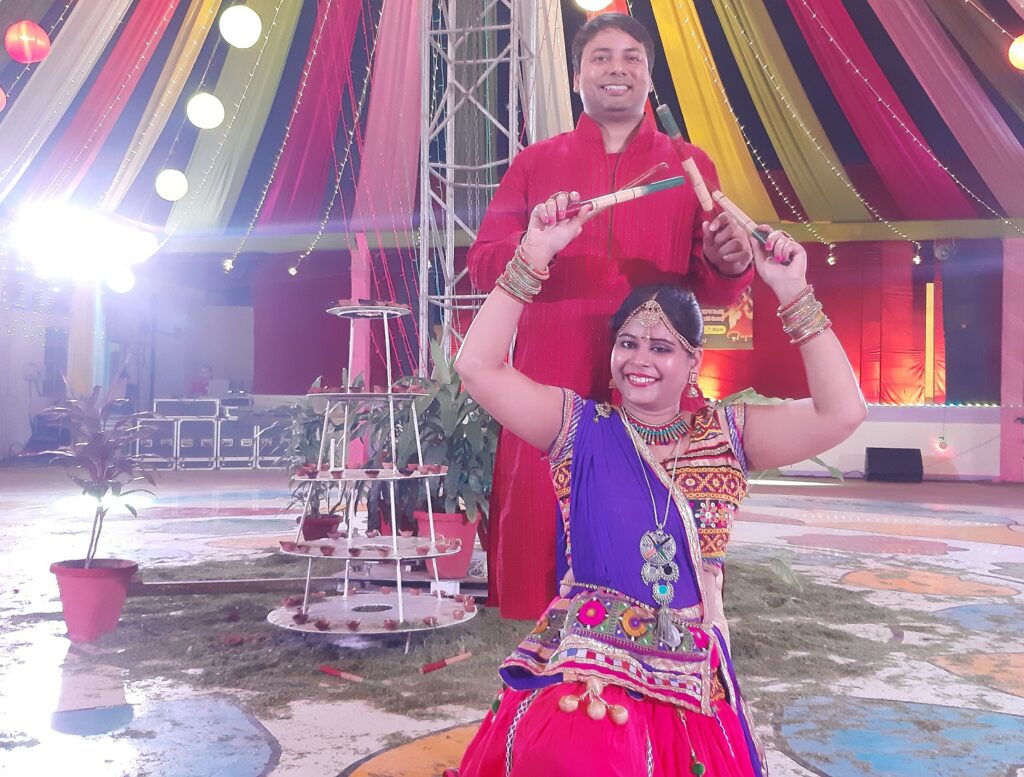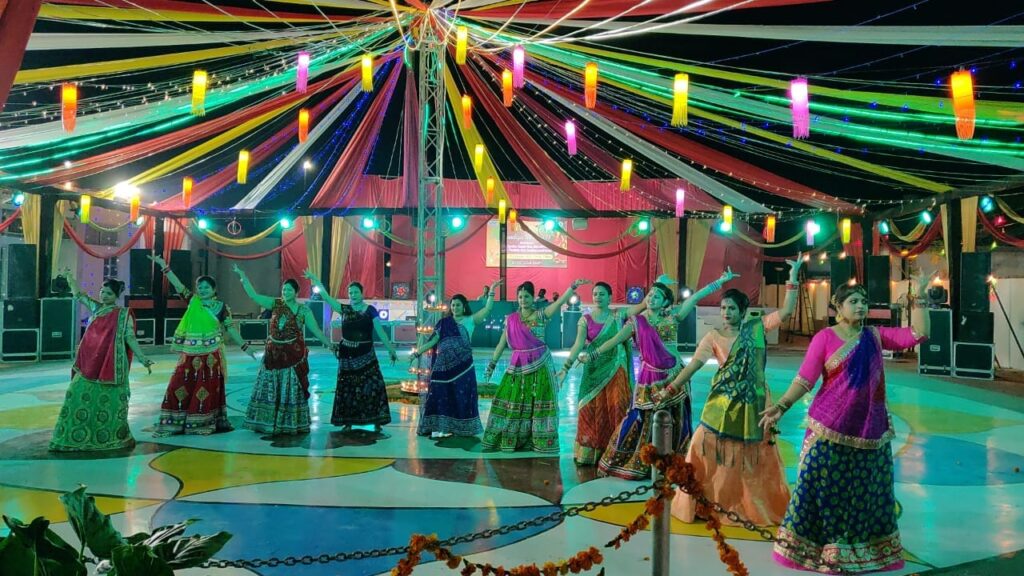Garba is an Indian folk dance that originated in the western state of Gujrat. This dance is an important part of religious traditions. The term Garba is derived from the Sanskrit word Garbha, which translates to ‘mother’s womb’.
According to the Hindu religion, Goddess Durga is the mother of the whole universe. Hence, in Navratri when people celebrate nine different forms of Goddess Durga they perform Garba dance to worship the deity.

Navratri is a festival celebrated over the span of nine days for worshipping Goddess Durga. It is celebrated during the autumn season. There is an auspicious connection between Garba and Navratri.
Garba Dance Performance
This folk dance is a marvelous example of coordination and charisma. Imagine hundreds of people dressed in colorful dazzling attire waiting for folk music to turn on. As soon as the beats start playing everyone forms a circle and start dancing in unison.
You hear everyone clapping simultaneously and spinning together. As they move in a circle the flare in the dresses works to enhance the sight. The colorful threads on their body and the delightful smile on their faces add a cherry on the top to the exquisite sight of Garba dance.
Origins of Garba Dance

Before performing the dance a lamp is placed in the center of the circle. As people worship the Goddess, they celebrate the light of life in the form of that lamp. People dance by coming together in the circle and then spreading outwards. The visuals are similar to a flower blossoming. It is believed that the circle formed during the Garba dance signifies the circle of life.
According to Hindu tradition, till the stage of salvation, every soul has to travel in the never-ending circle of life. The intricate details of Garba allow you to think over these intriguing concepts in the simplest form.
Social Importance
Garba dance is an excellent social interaction excuse. As the festival of Navratri comes close, all the participants start to plan meetings and perform Garba. Though it is an easy dance form that could be learned quickly, people strictly stick to the practice schedule.
Sometimes the performers are professional dancers, yet they join the practice sessions to take advantage of social exposure. This folk dance brings people close to each other. When you witness the scene of everyone dancing in unison and enjoying the folk beats then you will understand the strength of the bond created by this dance.
Even if you join a Garba performance spontaneously, you will be able to blend in the joyous culture and enjoy the warmth shared by everyone.
Popularity of the Garba Dance
Originally Garba dance was celebrated among Gujratis only but now with increased cultural interactions and the influence of mass media, every part of India and even the world enjoys and celebrates it. Garba dance is a delight for everyone including the musician, the performer, and the viewer.
While the musicians enjoy the lively beats of Garba, the performers take pleasure in the energetic yet subtle body movements and the viewer just adores the extraordinary blend of the joyous beats and the beautiful movements.
You can learn the Garba dance sitting in any corner of the world. But if you want to witness the startling scene of a dance performance featuring hundreds of dazzling dresses then you have to visit India during Navratri, Vasant Panchami, or Sharad Purnima. If you desire to experience the most extravagant Garba celebration then set your date to Navratri and destination to Gujrat.

Pingback: Eight Classical Dances of India As Per Sangeet Natak Akademy - Auchitya
Pingback: All Folk Dances of India - Auchitya
Pingback: Tippani Dance of Gujarat - Auchitya
Pingback: Tippani Dance of Gujarat - Spark of Life - Auchitya
Pingback: 8 Classical Dances of India As Per Sangeet Natak Akademy - Auchitya
Pingback: Tippani Dance of Gujarat - Spark of Life - Auchitya